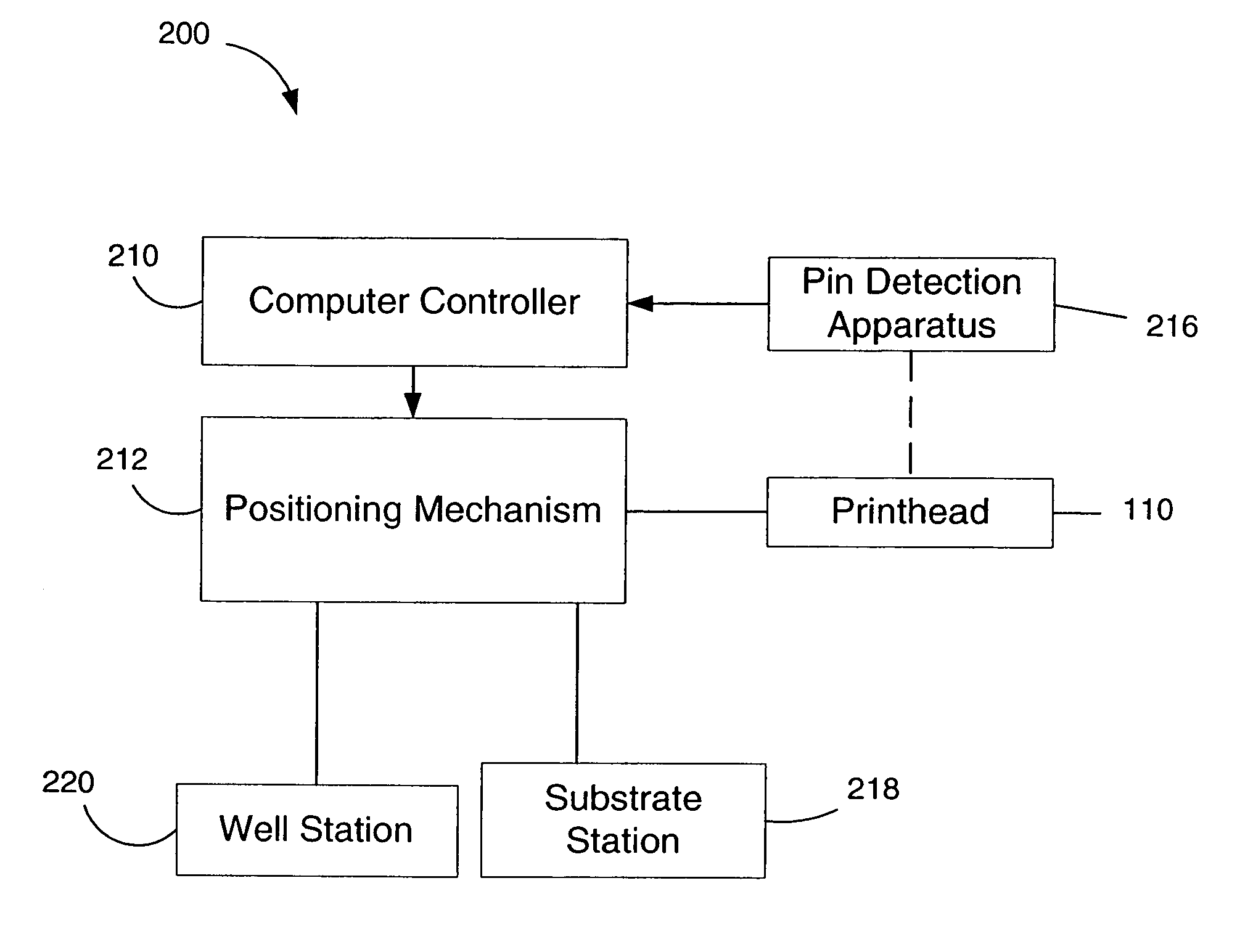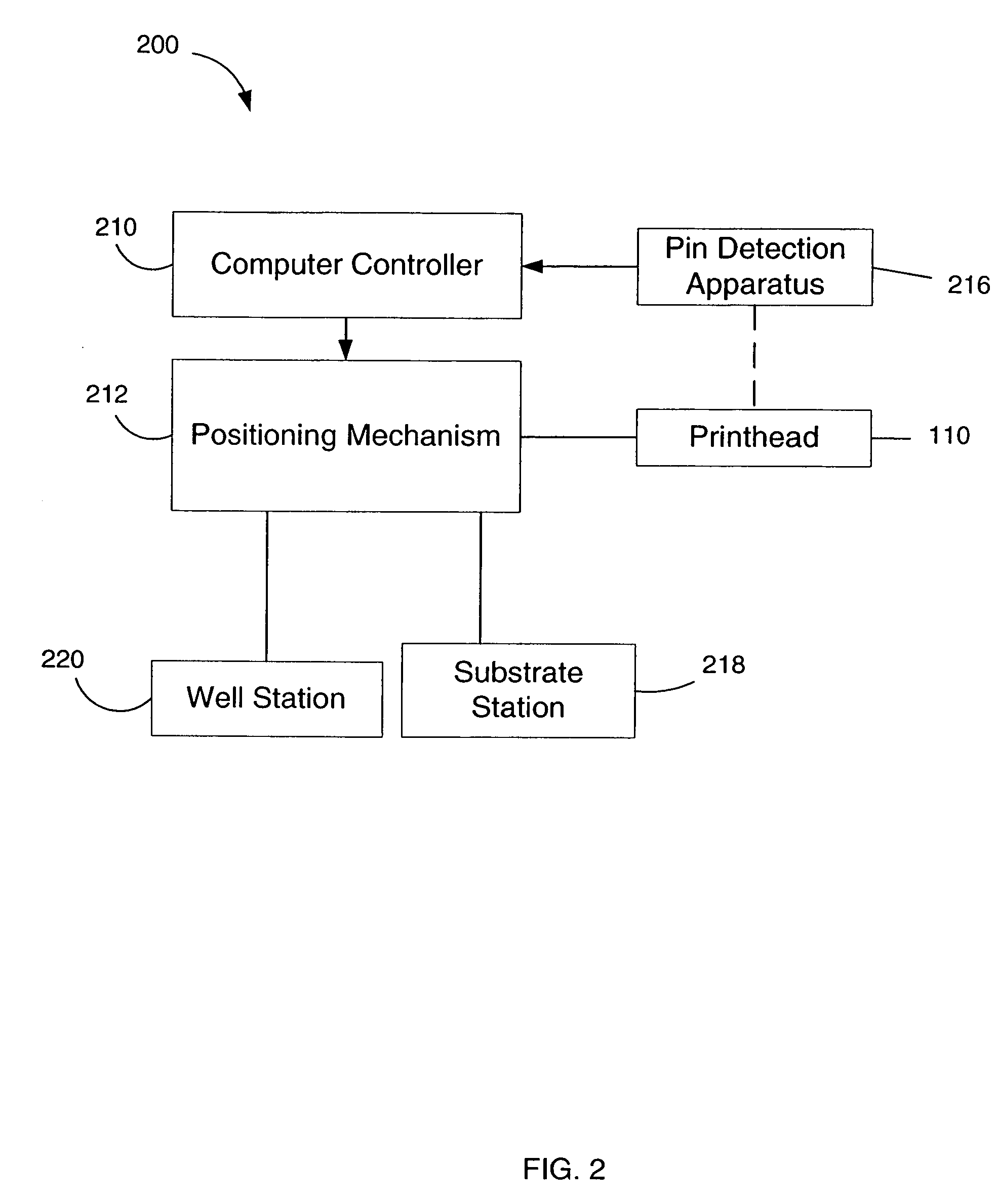Method and apparatus for automatic pin detection in microarray spotting instruments
a microarray and automatic detection technology, applied in the field of microarray spotting instruments, can solve the problems of high cost of pins, very fragile pins, and extremely time-consuming use of only a single pin to form microarrays
- Summary
- Abstract
- Description
- Claims
- Application Information
AI Technical Summary
Benefits of technology
Problems solved by technology
Method used
Image
Examples
Embodiment Construction
[0054] The present invention is generally directed to a method and apparatus for automatically sensing the presence (or absence) of spot dispensers such as pins in various possible mounting locations in the printhead of a microarray spotting instrument. Pin-location data obtained by the method and apparatus is provided to the computer controller of the instrument, which uses the data to control the motion of the printhead during operation of the instrument. More specifically, the controller utilizes the pin location data to determine the proper positioning coordinates for the printhead in subsequent sample uptake and microarray spot printing operations for one or more of microarrays being printed. Pin sensors can also report an error condition to a user.
[0055] Pin location sensing in accordance with the invention can be performed as needed at any time during use of the instrument. However, the inventive system is particularly useful for automating the initialization process of micr...
PUM
| Property | Measurement | Unit |
|---|---|---|
| thick | aaaaa | aaaaa |
| diameter | aaaaa | aaaaa |
| diameter | aaaaa | aaaaa |
Abstract
Description
Claims
Application Information
 Login to View More
Login to View More - R&D
- Intellectual Property
- Life Sciences
- Materials
- Tech Scout
- Unparalleled Data Quality
- Higher Quality Content
- 60% Fewer Hallucinations
Browse by: Latest US Patents, China's latest patents, Technical Efficacy Thesaurus, Application Domain, Technology Topic, Popular Technical Reports.
© 2025 PatSnap. All rights reserved.Legal|Privacy policy|Modern Slavery Act Transparency Statement|Sitemap|About US| Contact US: help@patsnap.com



